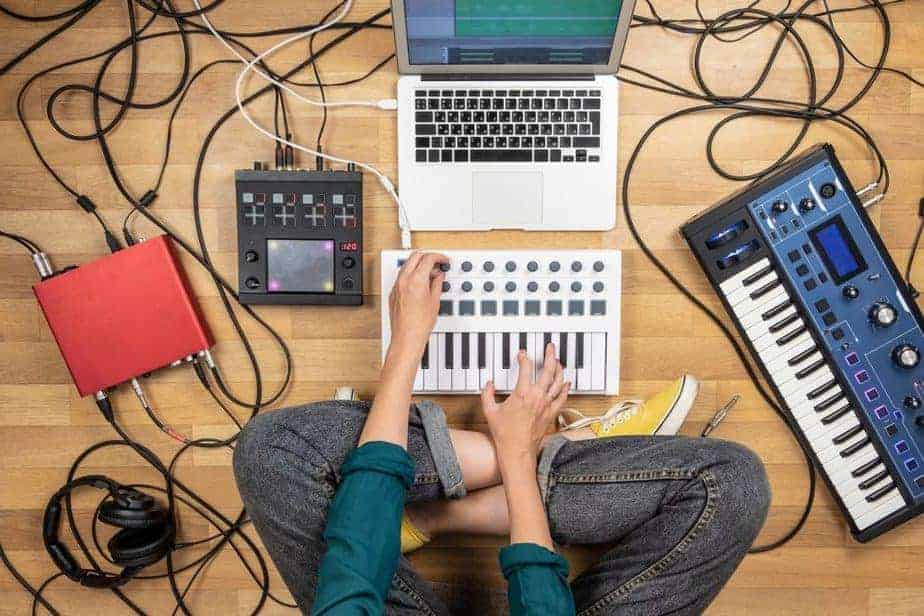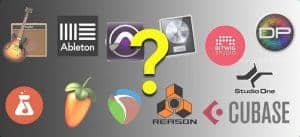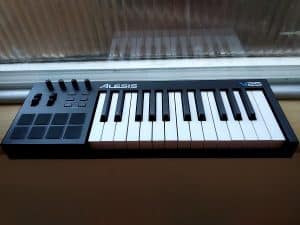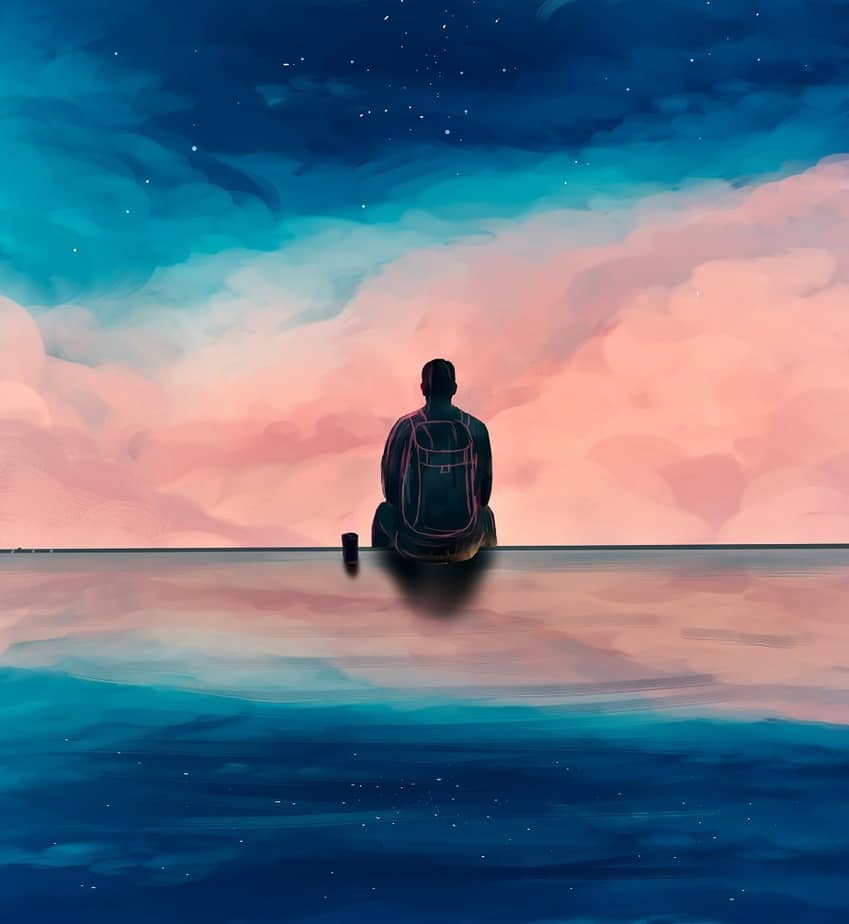
How to start making music on your computer
So, I take it you have been listening to your favorite songs and thought to yourself, How do they make this music? I asked the exact same question over 10 years ago, and surprisingly found out it was a lot easier than I originally thought! So, let us dive right in and talk about how to start making music on your computer.
Making music on your computer is now accessible to anyone who owns a laptop and some headphones. Basically, you use a piece of software called a DAW (Digital Audio Workstation) to layer different sounds such as drums, vocals, synthesizers, basses and other instruments you desire. They are layered in such a way that creates the structure of the song, such as the chorus or verse. When finished the song is sent off to a sound engineer who puts on the final touches before its released.
Sounds pretty simple right? Well if you want to learn a little more just read these 11 steps of how to start making music from your computer.
1. Download a DAW (Digital Audio Workstation)
There are many popular DAWs out there. Some are free, and some are quite expensive. Each DAW has its own unique workflow and differences that attract people for their specific needs. I personally use a DAW called Ableton Live 10. I have been through many other DAWs and Ableton is the one that resonated with my workflow. Prices range from $139 AUD for the Intro version, up to $1049 AUD for the Suite version.

You can see Ableton prices here: https://www.ableton.com/en/shop/live/
or download the trial version here: https://www.ableton.com/en/trial/
TIP: There is a great FREE online DAW called Soundtrap. It is a great way to see if making music is your thing without spending any money. You can see it here: https://www.soundtrap.com
Some other very popular and DAWs are Fl Studio and Logic Pro.
2. Get headphones, microphone, MIDI
Making music from home is now very affordable because you don’t need much hardware or gear. Obviously, you need to have a computer or a laptop, but the only other piece of gear needed is a good set of headphones. You can opt for speakers, but I find headphones are a better option as I don’t annoy my family or neighbors.
These are the headphones I personally use: https://audio-technica.com.au/products/ath-m40x/
TIP: When buying headphones, you want the headphone output sound to be as close to the original sound as possible. Some brands of headphones boost certain frequencies such as the bass etc. This can impact your song because you’re not getting a true sound.

There is a vast array of other hardware that can help you create music, such as MIDI Controllers. (Musical Instrument Digital Interface) These can allow you to control your DAW with buttons and knobs. You can even play these instruments just like a piano. If you were serious about getting into making music, I would consider the Alesis V25.
A great budget option for full-size keys: https://www.alesis.com/products/view2/v25
If you were after something you can fit into a backpack then have a look at the Akai LPK25: https://www.akaipro.com/lpk25-lpk25
I personally own these two MIDI controllers and a larger 61 Key controller.
3. Download some plugins & samples
A plugin is a piece of third-party software that connects with your DAW. Some plugins are effects, some are virtual instruments. Most DAWs these days come with a bunch of free sounds and virtual instruments to get you started.
I have compiled a list of the 10 best plugins for electronic music that you can see here: https://www.off-the-beat.com/10-best-plugins-for-electronic-music/
You can still make professional-sounding music with these tools, but a lot of producers collect all different third-party party sounds and instruments because they have a specific sound they like. I personally have over 500gb of sounds and I am continually looking for more. I find listening to new sounds and instruments sparks my inspiration and can help me get started when making a new song.
This is my favorite synthesizer plugin: https://xferrecords.com/products/serum
Tip: When you are learning how to make music, it’s very easy to get distracted by all the third-party plugins out there. It’s a good idea to only use the tools inside you DAW and learn them like the back of your hand. The same rule goes for hardware too. Don’t get caught in the trap of thinking new MIDI or plugins will make your music better. The only thing that will do that is hard work and practice.
4. Come up with drum loop
Now we have covered the tools needed to get you started, we can dive into the fun stuff of creating sounds and layering them into a song. Almost every song has these basic elements: Drums, Bass, Chords, Melody and Vocals.
Interesting fact: Professional music producers can have up to 100 different layered sounds in their songs! They do it so well that you can’t hear the different layers.
Let’s put together some drum samples and come up with an interesting loop. Here are some drum sounds I have put together for a song I am currently working on.
Tip: You want the drum loop to make you want to move. Then adding other elements only emphasizes the loop. To help, try moving the drums slightly off the beat. This gives your music a nice swing type feel. Flume does this really well and uses this technique in most of his songs.
5. Come up with chords and melody
Now that we have a groovy beat baby, we can begin to add some chords and a melody. Chords usually consist of 3 or more notes played at once. Future bass music can have really full chords of more than 10 notes playing at once! But for this song, we will keep it simple with 3 or 4 notes.
Tip: I find it easier to come up with a melody when I have my chords and beat down. I usually end up coming up with 3 or 4 melodies and then pick the strongest one. The other ones can still be used later in the track.
6. Come up with a bass groove
Adding the bass is always the most fun part. It’s when your track really comes to life and you get to feel what the end product will sound like. The bass is usually only 1 note playing at a time. An easy way to come up with a good bass groove it to use the lowest note of your chords and then lower it down an octave or two. I have layered 2 or 3 bass layers together to make it sound alive and have more depth.
Tip: To come up with an interesting bass groove you want the bass and the kick drum to work with each other. When done right, you will want to get up and boogie. Having the bass hit at the same time as the kick is usually a good option, but experiment and see what works best for you.
7. Sing or download Lyrics
This is also another favorite part of mine. Adding lyrics or vocal chops. Adding a human element to the song makes it so much catchier. People can sing along and relate to it so much more. If you have a voice, you can sing your own lyrics. Take notice of your favorite songs and they will more than likely have some sort of vocals in there. There are plenty of vocals available online. I like to use a plugin specifically for vocals called ‘Exhale’.
Exhale link click here.
Tip: You want your vocals to be catchy and easy to remember. This is what people will remember your song by, so it’s a very important step to get right. Ways to make it memorable are to keep it simple, and even repeat parts over and over. If you can sing along to it easily, so can everybody else.
8. Structure your song with chorus and verses
Now you have seen how an interesting, catchy loop can come together with just a few elements. Its time to evolve the loop into a full song. We do this by creating chorus and verse sections. By adding or removing elements of our song we can structure it how we want. Typically, a song is structured as follows. Intro – Verse – Chorus – Verse – Bridge – Chorus – outro. This is just a rule of thumb and can be changed.
Tip: If you are struggling to come up with a structure for your song, you can always look at your favorite songs and copy their structure. There is a reason those songs are getting played on the radio so why not learn from them.
9. Mix your song with effects.
By this stage, the song is almost complete. This is the stage where we add our effects and extra layers that bring it to life and make it shine. Effects such as delays, reverb, and distortion.
Background noise is a great way to fill out your song if you feel it’s sounding empty. Using risers and downward sweeps are a great way to build tension for your drop or chorus.
This stage of the song is where we get it ready to send it off to a professional mixing and mastering engineer. A mastering engineer listens to your song with fresh ears and makes some small adjustment to add the polishing touches and make it radio quality.
Tip: Adding a small delay and reverb to vocals really help bring them to life. I also add vinyl crackle to my track as background noise to help fill it out. Sometimes I even use natural sounds like thunder, rain or even whistling birds.
10. Create album art for your song

So, you have sent your song off to your mastering engineer and are waiting eagerly on its return! Use this time to design some album art for your song. Try and pick something visually that relates to your song.
I like to contact upcoming artists and see if they would be interested in sharing their artwork for free. You would be surprised at the free artwork people are willing to share. A good place to start is a website called ArtStation:
ArtStation Link: https://www.artstation.com
Tip: The album art on my SoundCloud links was completely free! Approaching artists in a warm and friendly way will help get your artwork for free. Sometimes you might need to pay $5 for a great piece of album art. Once you develop a relationship you can even ask them to create custom art to suit your song!
11. Upload your song and start making money.
Its arrived! You got your song back and it’s sounding better than ever! Its time to release it to the world and see where it takes you. It truly is a great feeling creating a song completely from your laptop in your bedroom, and then releasing it for the world to hear.
There are online distribution organizations that do all the hard work for you. The days of finding a record label and promoting your music are slowly fading out. We now have companies such as Distrokid and Amuse that distribute your song to iTunes, Spotify, amazon music and more.
Amuse: https://amuse.io
Distrokid: https://distrokid.com
They even collect your royalties and deposit them straight into your bank account! It can’t get much easier.
Tip: It’s still a great idea to promote your music on Instagram or YouTube. Start an Instagram account and get an email address that’s only used for your music. Use it to share your music around and to network with other producers from around the world. Collaborate with other musicians and learn from each other.
What can we do to help?
If this has inspired you to start making your own music, then have a read of our article on setting up a home recording studio for beginners: https://www.off-the-beat.com/10-home-recording-studio-essentials-for-beginners/
We at Off The Beat have a bunch of free resources available to help you along your musical journey.
You can access them HERE.
Even if you just have a question with your music please don’t hesitate to contact us. We pride ourselves in helping upcoming artists achieve their goals.
There is only one more thing to mention. Have fun! That’s why we all started producing music in the first place, and that’s why we should all continue. Good luck!